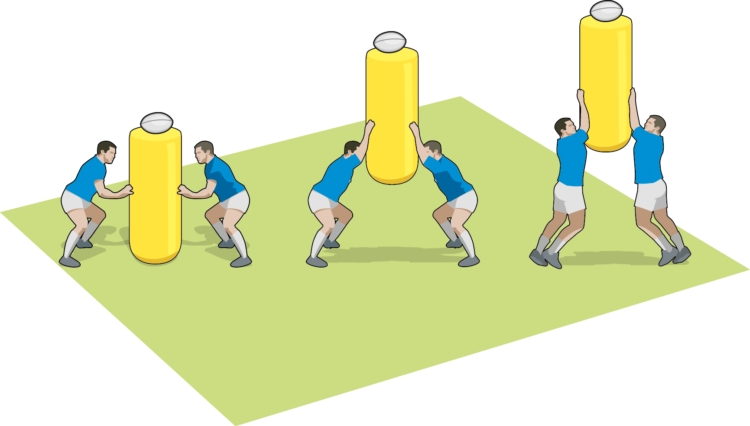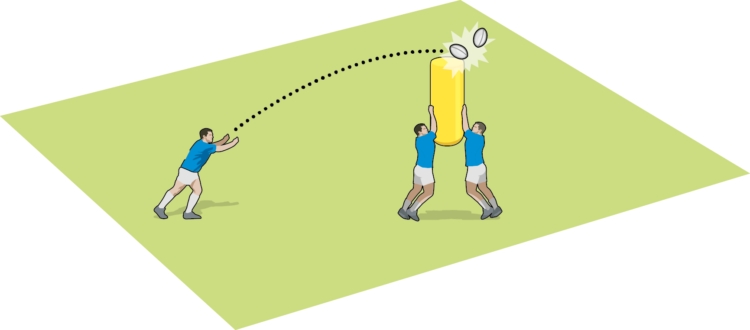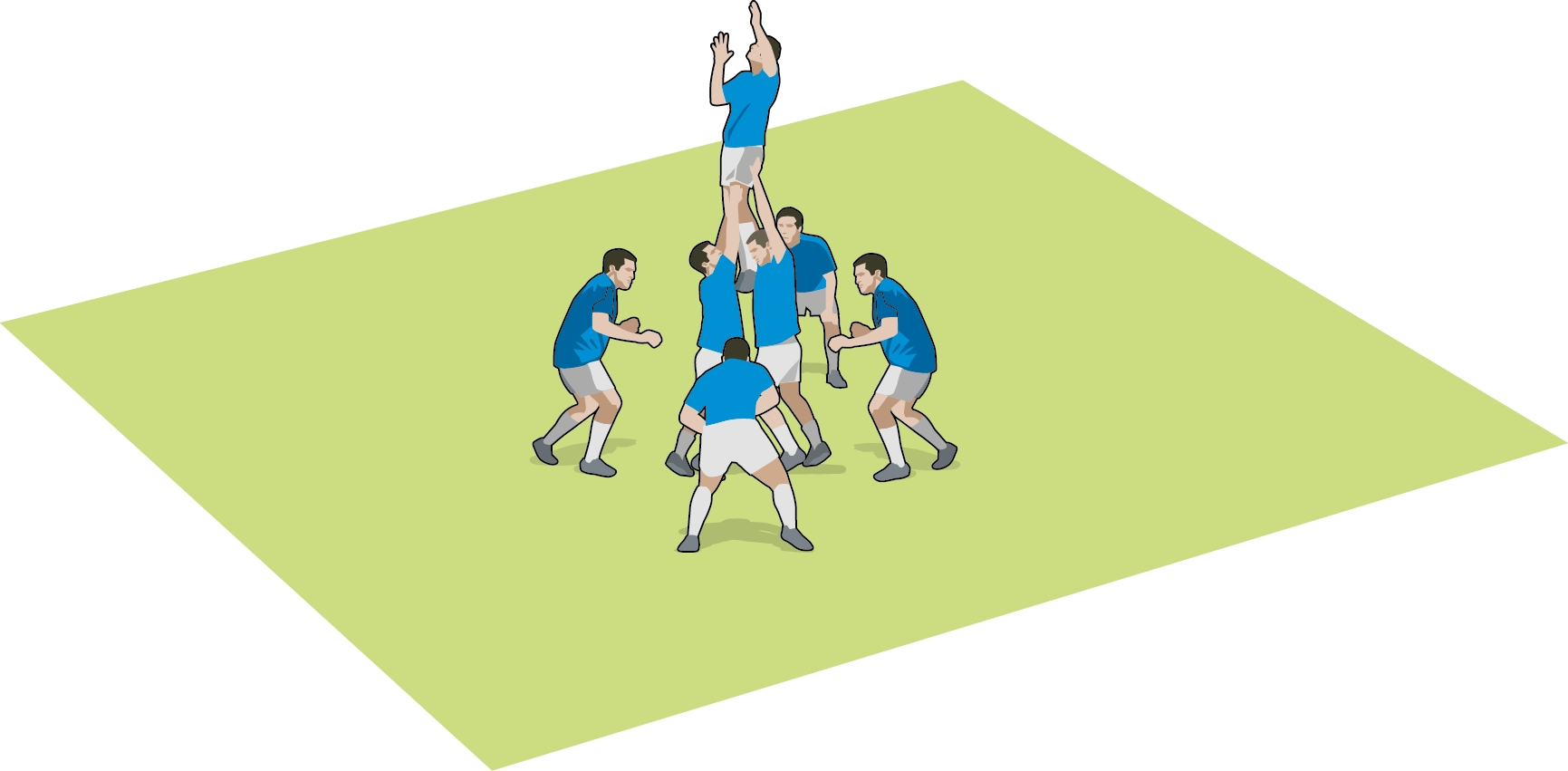You are viewing
1 of your 2 free articles
Introducing the lineout: Crouch, stand and lift
Scrums & Lineoutsby Ian Diddams
Lifted lineouts require dynamic, synchronised movements. This introductory session starts your lifters on simple exercises and progresses them in a safe environment to improve their technique.




- Put a lifter on each side of an upright tackle tube.
- Each lifter crouches and places the palms (fingers up) firmly into their side of the tube about shoulder-width apart.
- On a signal, they lift the tube vertically.
- Arms should extend first, then they stand and move into the tube until their bodies are against it, arms straight above the head.
- After they’ve practised the technique, put a ball on top of the tube.
- If the ball falls, the lift needs to be smoother and more vertical.

- The ball acts as a target for a thrower to hit with another ball to develop timing for the lift and throw.

- Next, add a jumper.
- For safety reasons, the lifting pod should have four players around it – one to each side of the jumper, and one behind each lifter.
- They catch the jumper if he falls.
TECHNIQUE
- Lifters extend their arms from a crouched stance into standing. It’s like a powerlifter doing a “snatch” lift.
- Lifters move right into the jumper’s body, with arms outstretched above them.
- The jumper should mentally emulate a plank or ladder. Pull knees and feet together and stretch the legs.
Newsletter Sign Up
Coaches Testimonials

Gerald Kearney, Downtown Las Vegas Soccer Club

Paul Butler, Florida, USA

Rick Shields, Springboro, USA

Tony Green, Pierrefonds Titans, Quebec, Canada
Subscribe Today
Be a more effective, more successful rugby coach
In a recent survey 89% of subscribers said Rugby Coach Weekly makes them more confident, 91% said Rugby Coach Weekly makes them a more effective coach and 93% said Rugby Coach Weekly makes them more inspired.
Get Weekly Inspiration
All the latest techniques and approaches
Rugby Coach Weekly offers proven and easy to use rugby drills, coaching sessions, practice plans, small-sided games, warm-ups, training tips and advice.
We've been at the cutting edge of rugby coaching since we launched in 2005, creating resources for the grassroots youth coach, following best practice from around the world and insights from the professional game.













